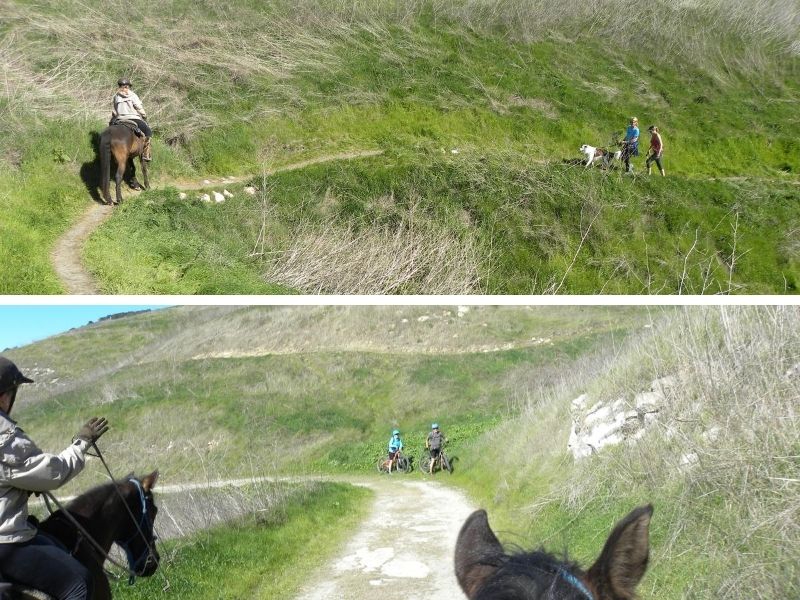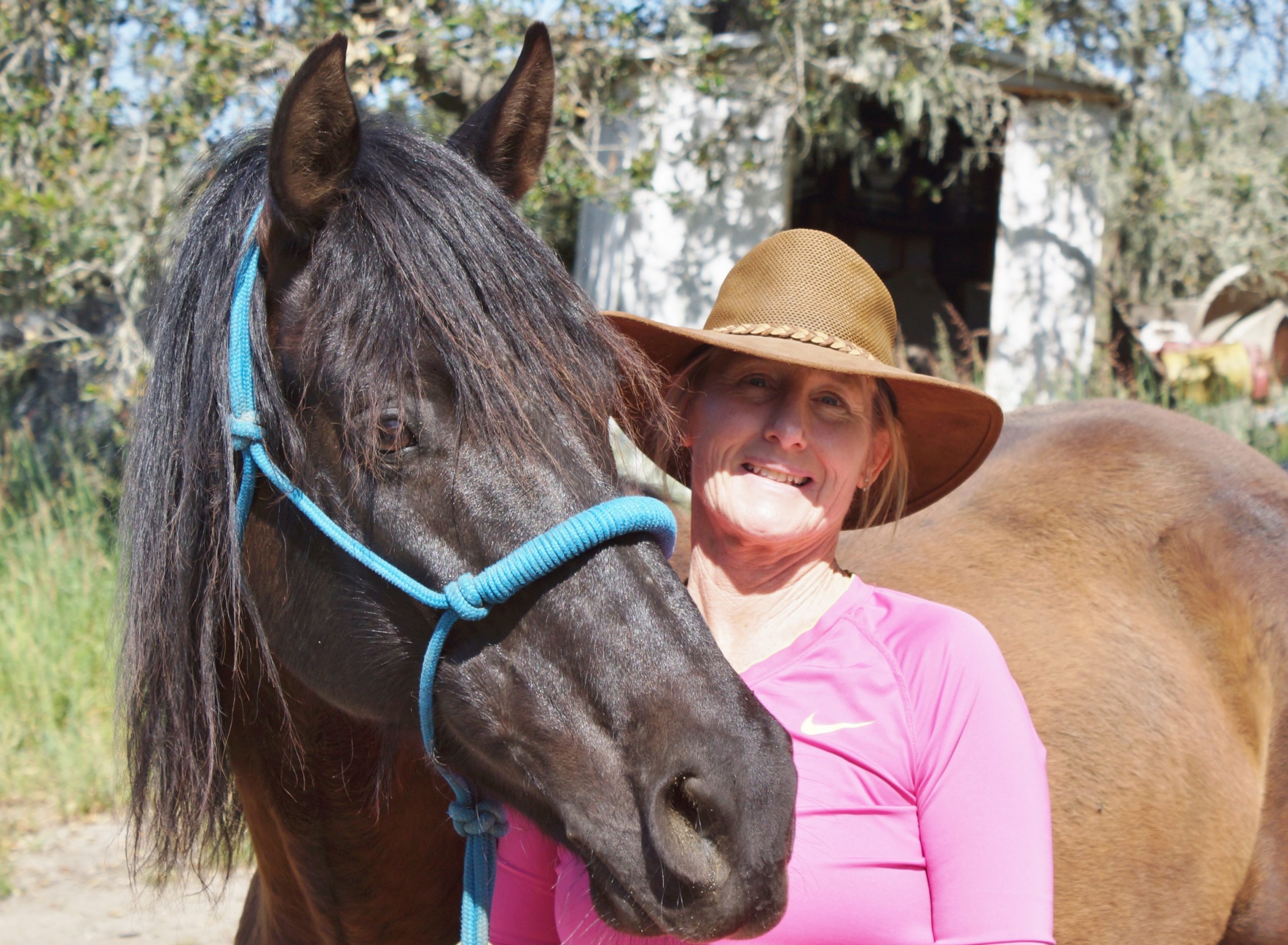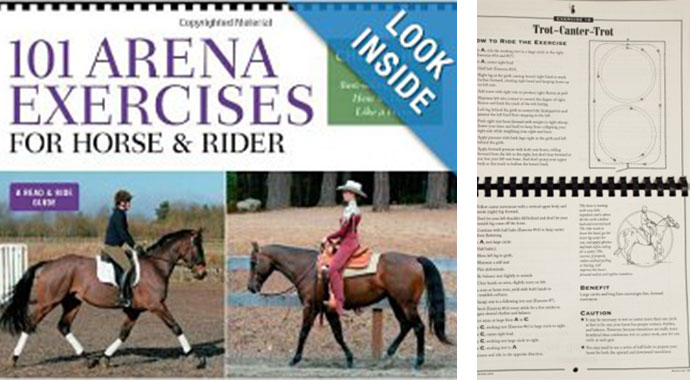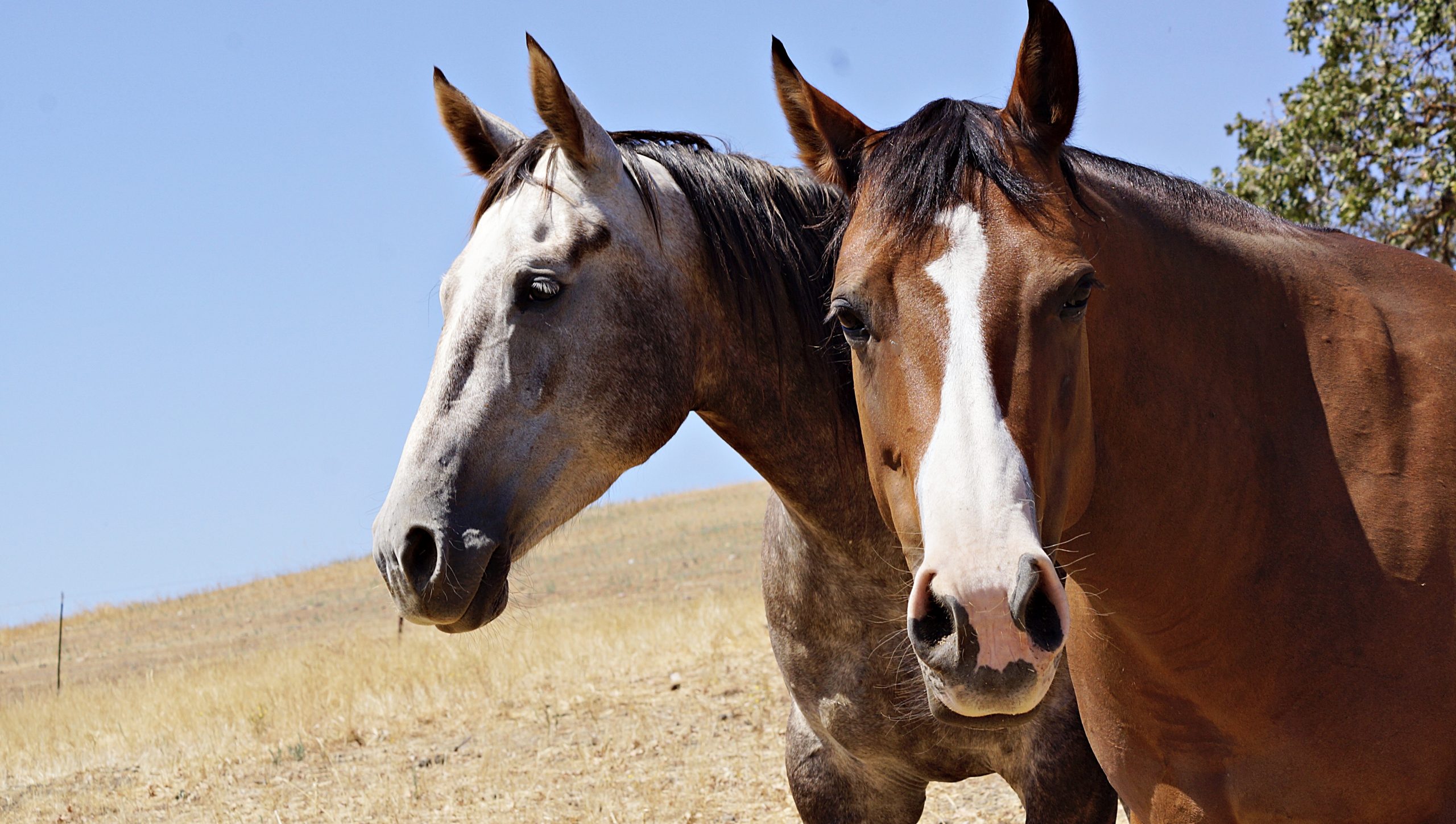Entitled Equestrians is a term I ran across in a thread regarding sharing multi-use trails, here on the Central Coast. Another quote from a comment in a different thread regarding horse manure on multi-use trails reads, “Funny thing is the horse people do zero trail work and do the most damage to the trail system.” The latter comment is not directly talking about our area, but it is a comment for pondering none-the-less.
With comments like these, we can see that Equestrians may have an image problem. So what can we, as Equestrians, do to make sharing multi-use trails possible?
Come ride along with me! Get your riding the SLO County Trails Hotsheet to get started and join the SLO Horse News Herd!
Three Ways Equestrians Can Make Sharing Multi-Use Trails Possible
1. Participate in Trail Maintenance Days
Personally, I know there is a dedicated, core group of equestrians who love our local trails. These women and men – many past the age of 60 – are out there doing trail maintenance and building trails. Equestrians may not have the same number of hands (as we represent a smaller group), but members of our local equestrian community are out there putting in the manual labor to keep trails maintained. Sometimes they even provide the horses to haul in equipment and building materials. Additionally, many groups are willing to do the lion’s share of the work as they come alongside dedicated equestrians.
Central Coast Concerned Mountain Bikers (CCCMB) frequently joins forces with other trail using enthusiasts to maintain the trails and relationships. Superbowl Sunday is the one of biggest trail work days. However, trail work days are scheduled throughout the year. There are many ways trail enthusiasts can support any trail work effort, from the physical aspect of trail maintenance to the administrative work of check-in and setting up the event site.
If You Can’t Join ‘Em
Another way to support CCCMB’s efforts, along with providing labor, is for local equestrian groups and individuals to provide snacks, lunches and water for the trail maintenance volunteers. Coming together in unity keeps the relationships between all trail enthusiasts viable, healthy and understanding of the needs of each user group.
Money of course is always needed. Ensure projects can be completed by trail enthusiast groups like SLOPOST, CCCMB and Ride Nipomo through donations. Also consider joining these organizations and others like Atascadero Horsemen’s Club and Backcountry Horsemen Las Padres Unit and get into the action.
We could all do more to help maintain trails. If you ever have the chance to do trail maintenance DO IT!
2. Clean up Horse Manure in Staging Areas
Unfortunately, manure piles are frequently left in staging areas, in neighborhoods, on multi-use trails, and in front of restaurants and wineries where horses are allowed to be tied. Recently, a popular dining place in Templeton changed hands. This restaurant was known for welcoming riders to tie-up their horses while enjoying a meal. However, the new ownership was hesitant to let this practice continue. Why? Horse manure. Apparently, a few horseback riders did not clean up after their horses. Now the benefit may be taken away from the horse community at large. This kind of behavior makes all equestrians look like careless manure ploppers.
Dog owners are provided with doggie poop bags to pick up after their pooch leaves a pile. Many people question why horse owners don’t have to do the same. Yet, just like the poop bags, manure management equipment is commonly placed in public staging areas and in private settings.
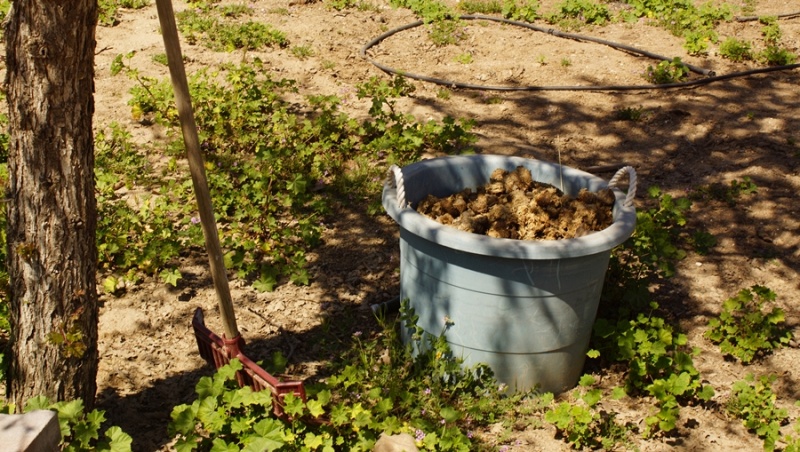
The make up of the droppings is quite different between dogs and horses. Notably, horse manure dries quickly, is absorbed into the top soil and the transferring of disease from horse to human is nearly non-existent. Yet, the general public is averse to any feces. So, equestrians must respect this and do their part in cleaning up after their horse ALWAYS in public staging areas and private use areas.
- Don’t clean out your trailer in a staging area.
- Pack your horse’s poop back home.
- Whenever possible, kick manure off the trail.
- Go back and remove manure piles from neighborhood roadways.
Being good stewards of the opportunities we enjoy to ride on public and private land helps brighten our equestrian image. Also, we must learn to ride alongside mountain bikers and hikers on a multi-use trail.
Practice good equestrian etiquette and clean up after your horse! Help other equestrians to clean up after their horses.
Don’t Ride on Muddy Trails! Honor the manual labor it takes to maintain trails. Horse hooves can leave deep holes in muddy trails.
3. Participate in Education Opportunities Between all Trail Enthusiasts
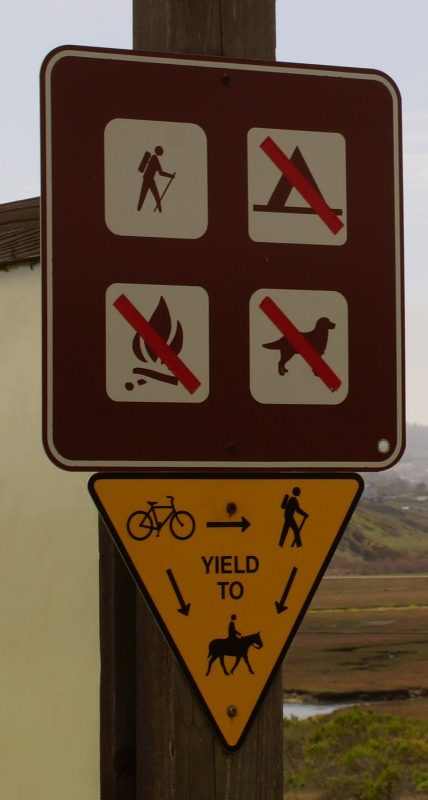
The universal yield structure of bikers and hikers giving right of way to equestrians is not to boost equestrian’s importance, but to ensure safety. Horses are the largest and most unpredictable trail user. Horseback riders should be adept at handling their mount in a variety of situations. In addition, the horse should be capable of meeting new situations on the trail.
However, communication between rider and biker and hiker is key to helping each group understand the needs of the horse in each encounter. The general public has either no or limited exposure to horses and simply needs education to understand. This could be as simple as by putting your hand up in the stop position for asking a biker to not ride up behind your horse. Instructing hikers to move slowly and to position themselves where the horse has a clear view of them is helpful. Friendliness goes a long way. Equestrians are the personality of the trails. Therefore, horseback riders should greet each person they pass while showing appreciation for any effort made to yield to the horses on the trail.
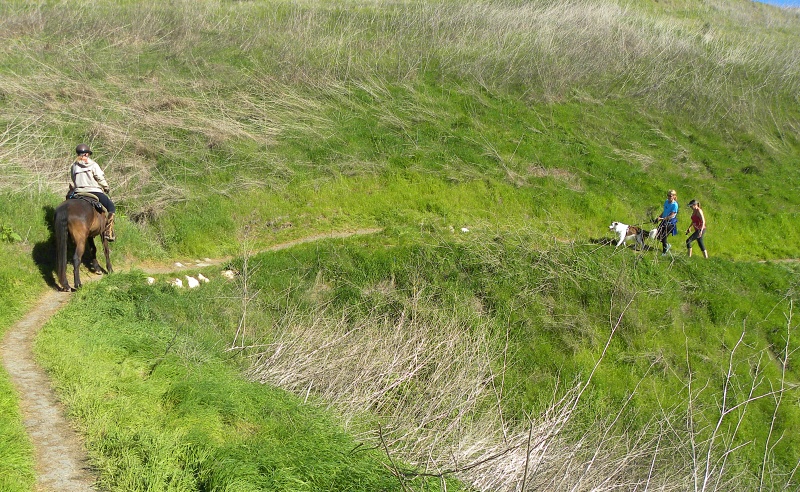
Education while Sharing Multi-Use Trails
Because of the higher vantage point, Equestrians are usually in the position of seeing the approaching hiker or advancing biker before the encounter. Calling out a greeting will alert the hiker or biker and establish connection. This enables the equestrian to set the stage for a positive encounter and make sharing multi-use trails possible.
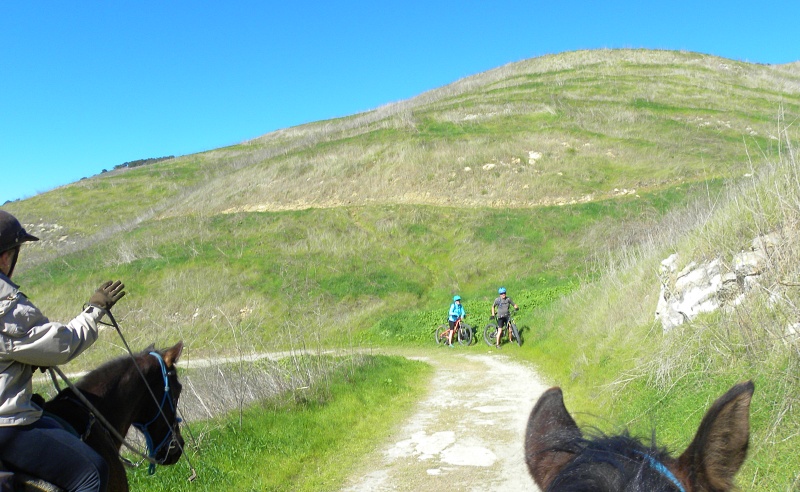
On the central coast, CCCMB has established a bell system for mountain bikers as a means of communication. Consequently, a set of bells has been placed at the trail head of multi-use trails. Bikers are encouraged to take a bell and attach it to their bike. The bell tingle alerts those along the path to their presence. Thereby the sound often eliminating the quick adjustment of position to avoid a negative encounter.
Education at Home
Educating others should not be limited to the horse trail. We can take the time to share our horses with others by inviting non-horse people out to experience our horse(s). When out and about, greet the public and let them pet your horse and answer their questions. Horses have been a vital part of developing civilization for many years. Engines and technology have separated the general public from horses. We must bridge the gap between our fellow man and horses.
We can help others connect with our horses. You can take the lead in setting up a positive encounter to make sharing multi-use trails possible.
Photo Credit: Sharon Jantzen Photos
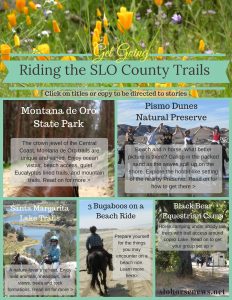
Get going! Looking for trails to ride in SLO County? This hotsheet will get you going on a few of the top rides. Get this delivered to your e-mail and join the SLO Horse News herd to stay up-to-date on herd happenings. Click here > SLO County Trails Hot Sheet to get going!

